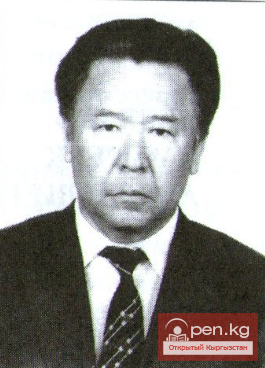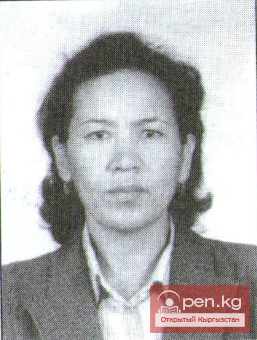
Wool Crafting.
Wool served as the primary material for making felt, pile and non-pile carpets, handwoven fabrics, various types of weavings, knitting, embroidery, lassos, and more. Woolen products were used to cover and decorate the yurt; they were used for making items related to riding and pack transport.
Sheep wool was widely used for felt, fabrics, and carpet weaving, as well as goat and camel wool. Sometimes it was dyed in traditional red, crimson, blue, yellow, or green colors, using dyes made from the roots, stems, and fruits of various plants, which were later replaced by aniline dyes.

Kyrgyz people make ornamented felt (tush kiyiz, ala kiyiz) in natural (white, gray, brown, black) colors. In the past, it was an indispensable material used to protect the dwelling from cold, rain, wind, sunlight, moisture, and dampness. Felts were known for their great durability (Venyukov, 1861. p. 111) and were in demand in the markets. In every aiyl, there are skilled craftswomen (oimochu), who are invited when making felt: they coordinate the color and ornamental compositions, outline the patterns on the felt, cut them out, lay out the wool, etc. They are assisted by women from the family and kin group of the customer. On the designated day, according to the custom of mutual assistance (jardam or kiyiz ashar), relatives and close neighbors come to help the craftswoman.
The process of making Kyrgyz felts is described in literature (Antipina, 1962. pp. 23-27; Makova, 1958. pp. 308-311; Makova, Cherkasova, 1968. pp. 13-30; Abramzon, Antipina, Vasilieva et al., 1958. pp. 122-124). The wool is washed, dried, fluffed with sticks (saboo), then laid out in two or three layers on a mat made from chiy (less often from reeds), sprayed with hot water, rolled up together with the mat into a roll, tied with a lasso, and rolled for about an hour or more to compress the wool. During the felting process, the roll is repeatedly opened for wetting with hot water.

Ornamented felt is created by felting a pattern from colored wool, or using "mosaic technique," applying colored fabric or colored felt, patterned stitching, or laying out colored cord (Antipina, 1962. pp. 22-41; Makova Cherkasova, 1968. pp. 13-30).
Using the method of felting the pattern, ala kiyiz (variegated felt) is created, ranging in size from 0.8 x 1.6 m to 3 x 5 m. The wool base consists of two layers: the first uses wool from the autumn shearing, and the second is made from spring and autumn wool, on which a pattern made from wool dyed in two to three colors is laid out; sometimes the pattern is placed on a base of slightly felted wool, after which the felting process continues. The ornamental motifs on ala kiyiz include various spirals, wavy lines, S-shaped motifs, etc., and the pattern does not have a clear contour, resulting in a slightly blurred appearance.
A thinner and denser felt called shyrdak, sized from 150 x 200 to 200 x 400 cm, is produced using the techniques of "kurak" and mosaic, as well as quilting, applying colored cord and fabric. The mosaic technique involves constructing an ornament from two contrasting colored felts: red, blue, yellow, or orange, as well as natural colors - white and brown. The pattern is cut out with a sharp knife (or scissors) simultaneously from two pieces of felt of different colors, the pieces are layered, and the edges of the felts are sewn together. The seam is masked with colorful cord (sol). This results in two identical in ornament and opposite in color products, characterized by a balance of background and ornament, and a clear contour of the pattern. The main pattern on shyrdaks is a spiral (kochkor muyuz) in various compositions, arranged into cross-shaped figures, diamonds, squares, and ovals (Makova, Cherkasova, 1968. pp. 17-24). The patterns on the borders differ (kyial, kush kanat, zhadam) from those on the central field.
Traditions of the Kyrgyz Folk Craft












































